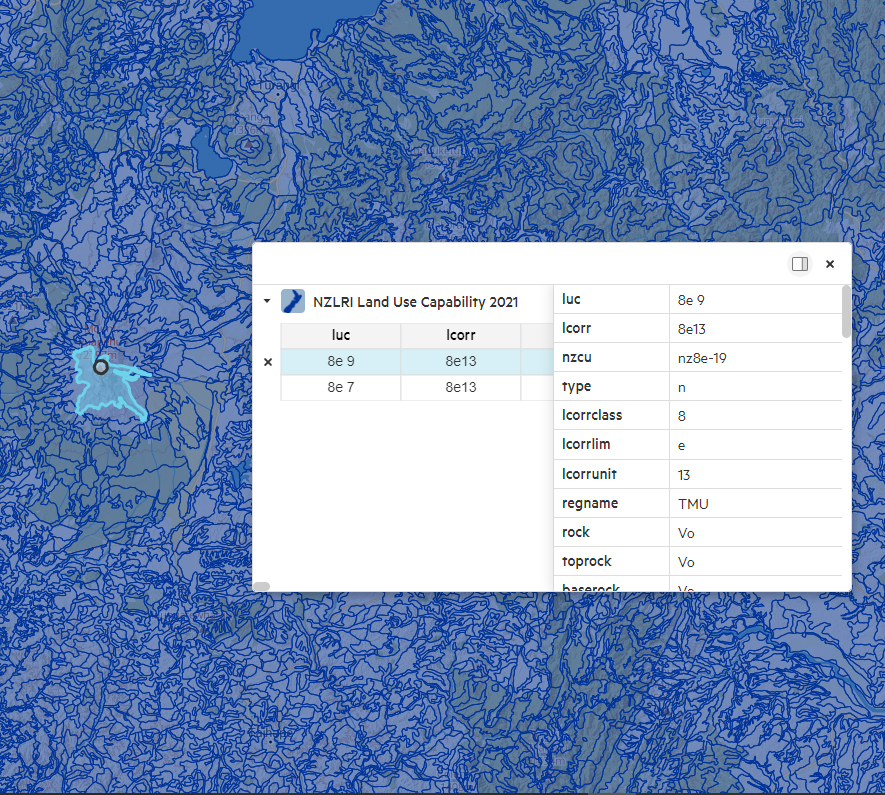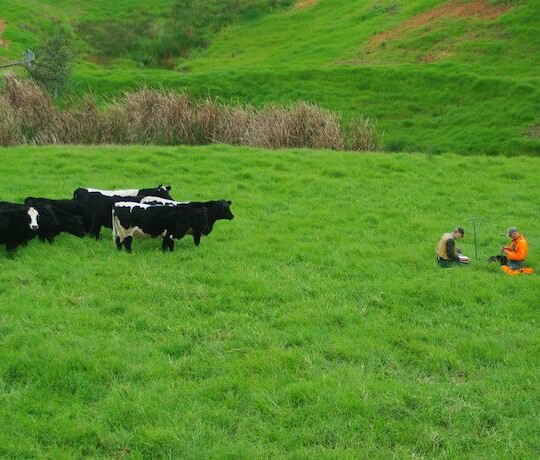Mapping editions
New technologies and updates in interpreted products have improved the quality of mapping. To date three mapping editions have been produced
Mapping editions overview

First edition mapping undertaken between 1973 and 1980 at a scale of 1:63,360, using first edition classifications with national coverage.
The NZLRI database was digitised, between 1977 and 1980, from the NZLRI maps (NWASCO 1975-79). The database consists of a total of about 85,000 map units (with a median size over New Zealand of 153 ha) and their physical resource descriptions. The data were collected between 1973 and 1979 from detailed aerial photo interpretation, large scale resource maps and extensive field work (Newsome 1992).
Although data were stored in a Geographic Information System the main method of spreading the information was via paper maps (NZLRI worksheets) and extended legends.
Edition 2 remapped areas that were amongst the earliest Edition 1 regions mapped (South Auckland, Northland, Wairau/Awatere, and Wellington).
Mapping was undertaken between 1980 and 1984. South Auckland region was remapped at 1:63,360 scale on NZMS 1 sheets, while the remainder were compiled on 1:50,000 scale NZMS 260 (metric) topographic sheets (Newsome 1992).
The third edition accessed via the LRIS Portal contains a restructured polygon attribute table to allow the core NZLRI to complement the newly created fundamental soil layers with minimal duplication.
The NZLRI layer contains the same information as the NZLRI worksheets. There are about 100,000 polygons (map units) within the NZLRI, each of which describes a parcel of land in terms of five characteristics or attributes.
Edition 1 mapping was carried out between 1972 and 1979. The North Island was divided into 10 regions and the South Island was mapped as a single region. Mapping was carried out at a field sheet compilation scale of 1:63,360 (1 inch to one mile).
A total of 85,000 map units were identified in the NZLRI throughout New Zealand (excluding Stewart Island and the Chatham Islands) with a mean map unit size of 335 hectare (ha) (maximum 61,265 ha) and minimum map unit size targeted at 15 ha (although there are approximately 300 Edition 1 polygons of less than 10 ha).
Part of the Waikato region was remapped during 1980-84, with some 20 additional LUC units being added to the regional extended legend and published in 1986. This part-regional upgrade is consider
Edition 2 mapping was carried out between 1988 and 1998 in four regions: Northland; Gisborne-East Coast; Wellington; and Marlborough. Each region had an upgraded or new regional extended legend, field sheet compilation was carried out at 1:50,000 scale. The more detailed mapping scale and time available lead to a significant change in map resolution from Edition 1. A total of 37,000 map units were identified across the four regions with a mean map unit size of 97 ha (maximum 3,327 ha) and minimum map unit size targeted at 5 ha approximately 360 map units of less than 5 ha).
The mapping process was essentially the same as for Edition 1, except for the use of: new regional LUC Extended Legends; a national rock type classification; the recording of soil by New Zealand Soil Classification (NZSC) to Subgroup level for Gisborne East Coast instead of soil series or set; North Island style erosion severity recording in Marlborough (e.g. 3Sc2Sh1G cf. 3ScShG); a new and more detailed vegetation coding and the recording of percentage cover to the nearest 10%.
Paper maps for Edition 2 were only published for the Northland region. For the other regions 2nd Edition data is available through Geographic Information Systems (GIS) only.
The third edition (2000), accessed via the LRIS Portal contains a restructured polygon attribute table to allow the core NZLRI to complement the newly created fundamental soil layers with minimal duplication.
The latest update of Edition 3 NZLRI involves no new mapping but does include a new National Land Use Capability legend that correlated for all regions across New Zealand. Attributes include original LUC units codes and unit descriptions so that users more familiar with original regional codes and North Island correlations can track the pedigree of units from old to new codes and descriptions.
The NZLRI is a powerful tool as it provides consistent coverage across the entire country at a nominal scale of 1:50 000.
The NZLRI spatial database contains the same information as the NZLRI worksheets. There are about 100 000 polygons (map units) within the NZLRI, each of which describes a parcel of land in terms of five characteristics or attributes (rock type, soil, slope, present erosion type and severity, vegetation). Soil information is adapted from publicly available soil surveys produced by Manaaki Whenua and its predecessor organisations.
References
Lynn IH, Manderson AK, Page MJ, Harmsworth GR, Eyles GO, Douglas GB, Mackay AD, Newsome PJF 2009. Land Use Capability survey handbook – a New Zealand handbook for the classification of land. 3rd edition. AgResearch Hamilton; Manaaki Whenua Lincoln; GNS Science Lower Hutt, New Zealand.
Newsome P.F.J. 1992. New Zealand Land Resource Inventory Arc/lnfo Data Manual Edition 1. DSIR Land Resources Technical Record 81
NWASCO 1975-79: "New Zealand Land Resource Inventory Survey", 1:63,360. National Water and Soil Conservation Organisation, Wellington, New Zealand.
